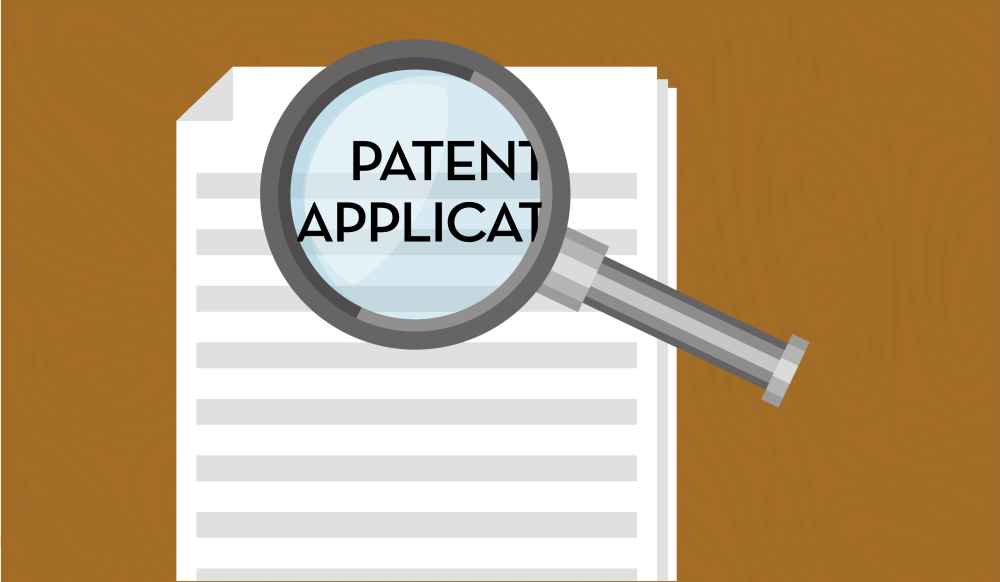1. Skip the abstract.
Patent abstracts are hard to read–meandering at best, and deliberately vague at worst. The abstract has little legal significance beyond shedding light on the claims and often does not accurately capture the essential nature of the patent.
2. Think through the drawings.
The drawings in a patent application can assist in the understanding of an invention. The United States Patent and Trademark Office (“USPTO”) selects one representative drawing to appear on the front page of the patent. The drawings should show every feature of the invention specified in the claims.
Drawings can be classified into three broad categories:
- Detailed illustration of a manufactured good,
- Block diagram representing the various parts of a system in general terms and indicating the relationship of the parts, or
- Flowchart which gives the steps of the method (commonly used in method and software patents)
3. Read the specification.
The specification is the meat of the patent. It comprises the written portions of the patent except for the first-page information and the claims. A well-written specification will explain the invention in immense amount of detail.
The trick to reading the specification is looking for the problems that the invention solves and how those solutions are implemented.
For method patents describing software, the key is understanding the design of the system. Do not think in terms of code. Gene Quinn from IPWatchdog said it best, “the code is simply a set of directions – a set of instructions that will ultimately explain to the computer what needs to be done.” What you need to understand is “how a computer programmer would be able to get from point A to point B, with point A being a list of desired functionality and point B being the code that enables the functionality.” The inventive step is what is described in that journey. A well-written software patent will discuss multiple ways a computer coder will seek to accomplish the same task.
See an example of a patent application
You will come across the following parts in a specification:
- Title of the invention
- Cross-reference to related applications – if this patent belongs to a family of patents–i.e., is related to other patents or based on earlier-filed U.S. applications–it will say so after the title.
- Statement regarding federally sponsored research or development – found in applications where invention was developed under a contract from, or sponsored by a U.S. government agency.
- Reference to microfiche appendix – a microfiche or CD-ROM appendix may be supplied with the application when listing a very lengthy DNA sequence or computer program. Chances are you will never need to locate this information.
- Invention background
- Generally the first paragraph puts the invention in context. A connecter may be used to describe the problem the invention solves or the area of technology in which it falls.
- Following is a description of prior art, which is earlier inventions. A brief comment as to why the invention is better, more effective, or cheaper may be included.
- Next is a description of the invention’s various features and nuances. For example: “copy parental verification description of element A.”
- Patents pre-dating the America Invents Act (“AIA”) report a best mode, a detailing of the preferred way to practice the invention or how it works best. Whether the AIA did away with the best mode requirement is a topic for discussing in another blog post, for now (if the application was filed after September 16, 2011, it may or may not include a best mode.)
Unless it’s a mechanical or manufactured-good patent, skip the painfully detailed descriptions of each drawing. The task of flipping pages back-and-forth to link the reference numerals on the drawing with the text in the spec is unnecessary and time-consuming.
4. Read the claims with caution.
The most important part of the patent is the claims. The enforceability of the patent depends on this section. The USPTO requires particular formatting of patent claims, which are often hard to read. It may help to think of the claims as written in their own computer language and designed by patent attorneys and examiners which includes a distinct syntax, a dictionary-maker, and defined-methods.
Here are some things to think about when reading claims:
- Patent-specific lingo – certain words carry specific meaning. For example “Element A including ingredients 1, 2, 3, 4” has a completely different meaning then “Element A consisting ingredients 1, 2, 3, 4.” The former would cover Element A with ingredients 1,2,3,4 and anything else you want to throw into the mix. The later claim would cover Element A with only ingredients 1, 2, 3, and 4.
- Patent grammar – nowhere will you find more run-on sentences than in a patent. According to the Manual of Patent Examining Procedure (MPEP)Section 608.01(m) a claim is a sentence, no matter how many words. If the claim requires 800 words to accurately protect its inventiveness than behold one sentence with 800 words.
- Means-plus-what? – After recent decisions by the Federal Circuit, even the patent bar is perplexed as to its correct usage. Means-plus-function claims allows the drafter to describe an element in terms of what it does rather than its structure.
- Narrowing the scope – a claim describes the various component’s structure and how those components interrelate. The independent claim (standalone claims that do not reference any other claim) defines the invention in the broadest terms and excludes all unnecessary options. Dependent claims are used to narrow the independent claim by describing additional elements or adding restrictions or by narrowing the scope of a term.
- A Patentee is his/her own lexicographer-When drafting a patent, a patentee (more often the patent attorney) can invent a term or give a term a new or more restrictive meaning than would normally apply.
